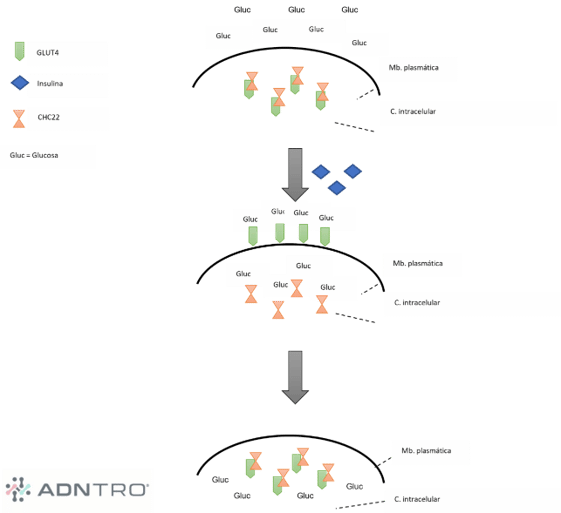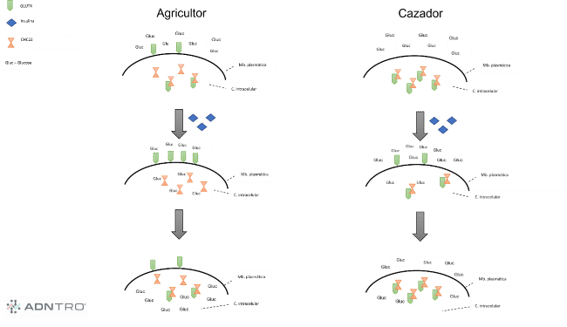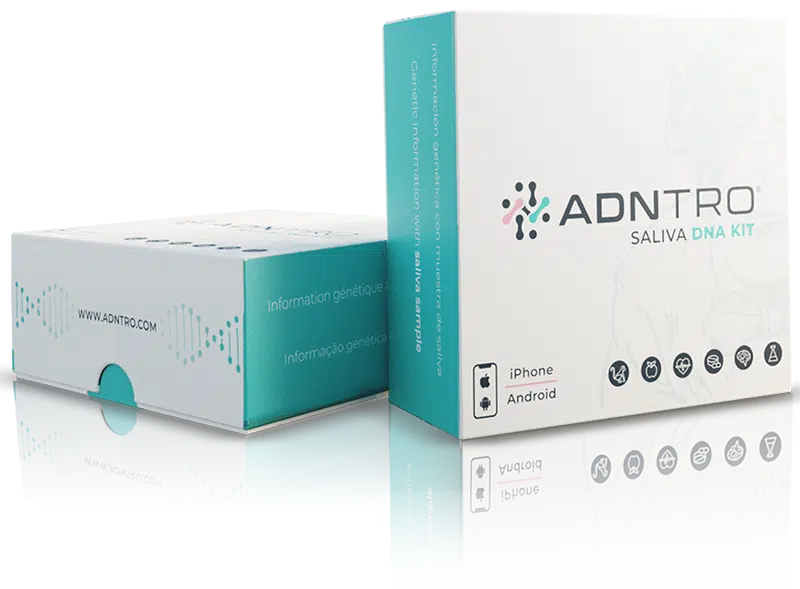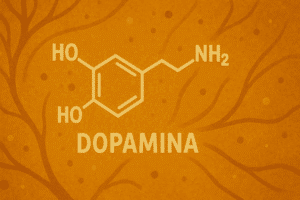Throughout the process of evolution, there have been significant changes in our history. One of them, undoubtedly, is the change of the way of life of the hunter-gatherers nomads to farmer-stockbreeders sedentary. This fact was decisive for the history of mankind which occurred approximately 10,000 years ago and culminated with the appearance of the new cities.
As it could not be otherwise, when we talk about evolution, we are intrinsically talking about genetics. After all, evolutionary processes are nothing more than spontaneous mutations that appear in DNA. These mutations are fixed, i.e. they will pass from generation to generation, if the mutation has an evolutionary advantage over other variants. On the contrary, if the mutation confers a disadvantage to the individuals possessing it, it will not be fixed.
When we talk about hunters and farmers, we are not only talking about two large groups with very different lifestyles, but also about two different genetic profiles due to the evolutionary process mentioned above.

Carbohydrate intake in farmers
When we eat carbohydrates, they are digested and processed into sugars, which circulate in the bloodstream providing energy for the brain and other parts of the body. However, be aware that too much sugar in the blood can be harmful.
The intake of carbohydrates - sugar molecules - increased with the appearance of farmers. We see this clearly when we compare the amount of carbohydrates we consume with wheat (one of the first cultivated plants) and with meat.

Mechanism of our organism after the ingestion of carbohydrates
When eating, the sugar intake is balanced in our organism thanks to the response of the insulin. GLUT4 plays an important role in the glucose uptake (from the blood into the cells). GLUT4 is located in an intracellular storage compartment where it awaits release to the plasma membrane. This release occurs in response to insulin for glucose uptake. The protein CHC22 (encoded by the gene CLTCL1) is necessary for GLUT4 trafficking back to the GLUT4 compartment. of storage intracellular.
The GLUT4 pathway is the dominant mechanism for eliminating blood glucose after a meal.

Genetic profile farmer vs. hunter
There are two allelic variants of the CLTCL1 gene, which encode different CHC22 proteins. As mentioned above, this difference is due to an evolutionary process. When talking about our ancestors, the C allele is more frequent in agricultural populations, while the T allele is more frequent in hunters.
And what is the reason for this distinction? Functional studies indicate that the variant C is less effective in controlling GLUT4 membrane trafficking (less efficient at sequestering GLUT4) which means more GLUT4 on the cell membrane and greater tendency to reduce the amount of blood sugar - farmer - that T - hunter -which is associated with an attenuated blood glucose withdrawal response.

Evolutionary studies suggest a correlation with regular consumption of digestible carbohydrates (higher amount of glucose) and variant C (farmer) as this new form became more common in humans with the introduction of cooking and agriculture. Both technologies are associated with increased sugar intake.
Coexistence of both profiles
The CHCC2 story suggests that storing the glucose transporter GLUT4 inside the cell was an advantage for our ancestors, as it allowed them to maintain correct/high blood sugar levels during periods of fasting that contributed to the development of a larger brain (hunters).
However, the emergence of the C variant, farmer, during the period of agriculture was advantageous, as it allowed a faster and more efficient withdrawal of blood glucose when needed due to high carbohydrate consumption, allowing a fixation of this variant in the population. Scientists believe that increased carbohydrate consumption may have been the selective pressure that drove the genetic adaptation of this variant.
Today, both variants coexist, conferring different abilities to control blood sugar levels. Thus, although this variant is not directly associated with type II diabetes, a carbohydrate-rich diet is more likely to trigger diabetes in hunters than in farmers due to a greater likelihood of developing insulin resistance.
Thanks to a nutrigenetic testit is possible understand how we have adapted to the changes that have arisen throughout the process of evolution, something that not only informs us about why people lived or died in the past, but also helps us to better understand the relationship between diet, health and disease today..
Discover with the dna testing by ADNTRO how your body metabolizes carbohydrates among many other things! Remember that if you are already genotyped with another company, you can upload your RAW DNA data for free.














